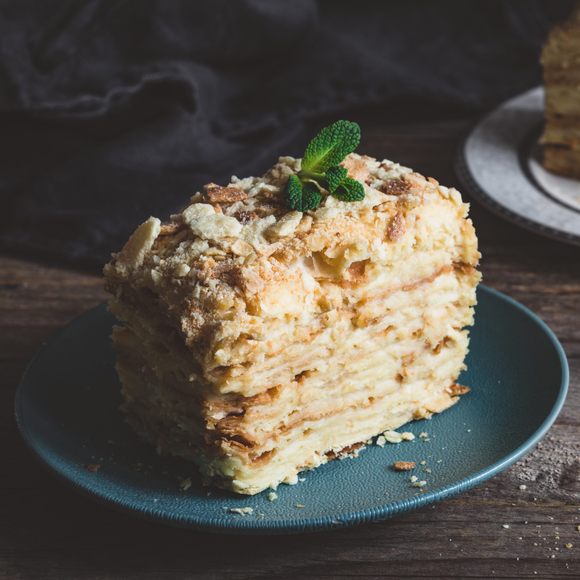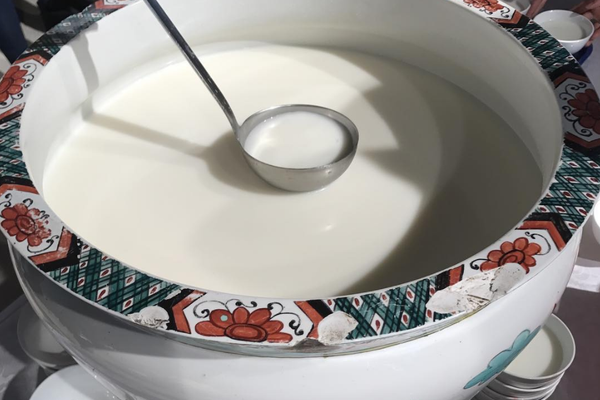Sweets
Russian Napoleon Cake
This traditional dessert commemorates the country's sweet taste of victory over the French emperor in 1812.
The Napoleon cake, a New Year’s Eve staple in many Russian households, may be similar to the French emperor in fame, but certainly not in stature. Standing tall with at least eight tiers (and sometimes more than 20) of alternating layers of pastry and custard, the Napoleon cake has become a national Russian dish, inspired by the French mille-feuille.
In 1912, the first iteration of the cake was crafted to honor the 100th anniversary of the country’s victory over Napoleon and his troops. Initially, the cake was much smaller: a single-serve, cream-filled pastry crafted to resemble the defeated Frenchman’s triangular bicorne.
Over the years, the Napoleon cake underwent a series of transformations, including axing the eggs and replacing butter with margarine during the Russian Revolution. But eventually, the final product shaped up to become a whopping, many-tiered cake, topped with crumbled pastry, which some claim symbolizes the snow that allegedly helped the Russians defeat Napoleon. Beware that baking it is a bit of a battle itself: Between crafting all of the pastry layers, whipping up the custard, letting it cool, and assembling, the process usually takes several focused, but worthwhile, hours.
Written By
 Abbey Perreault
Abbey Perreault














